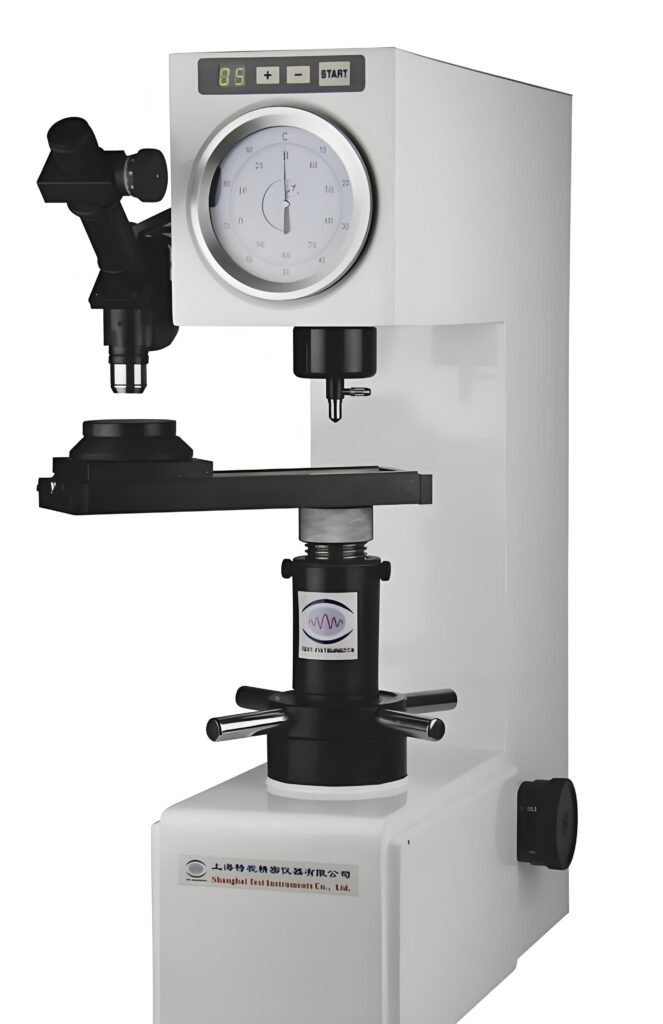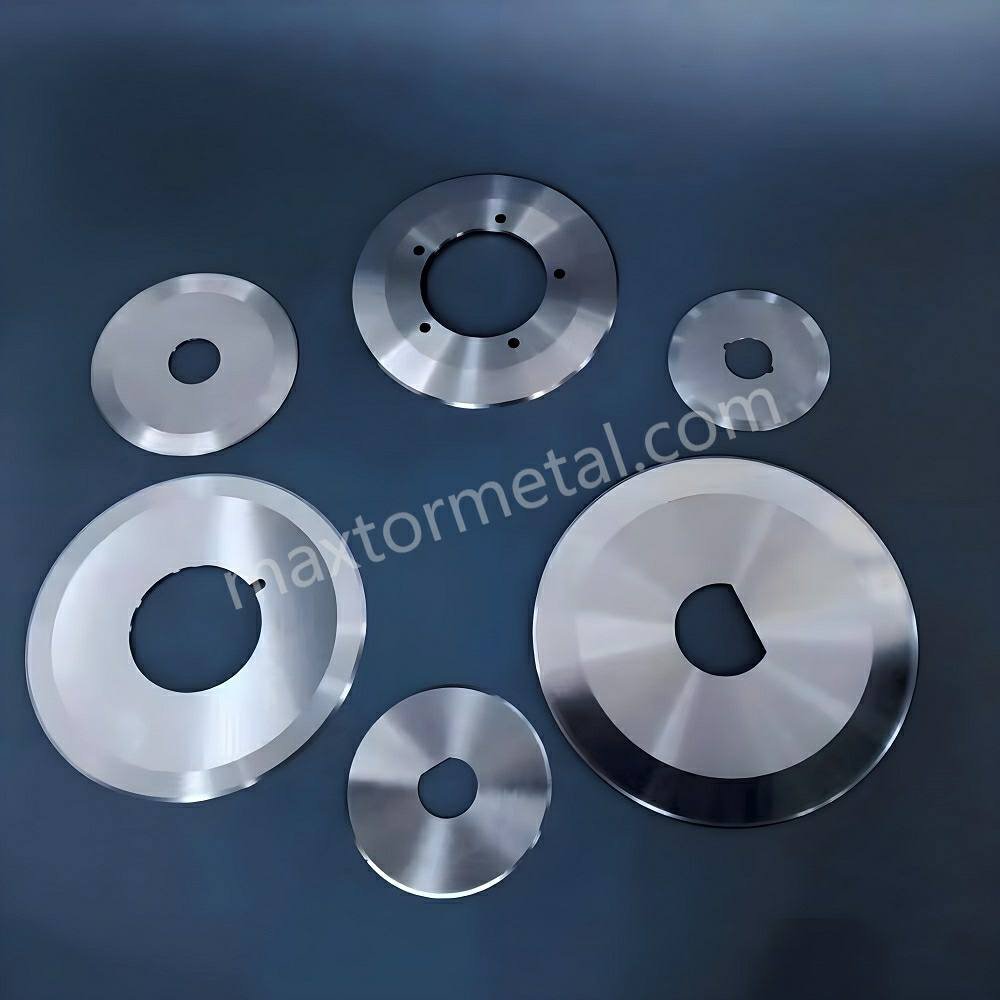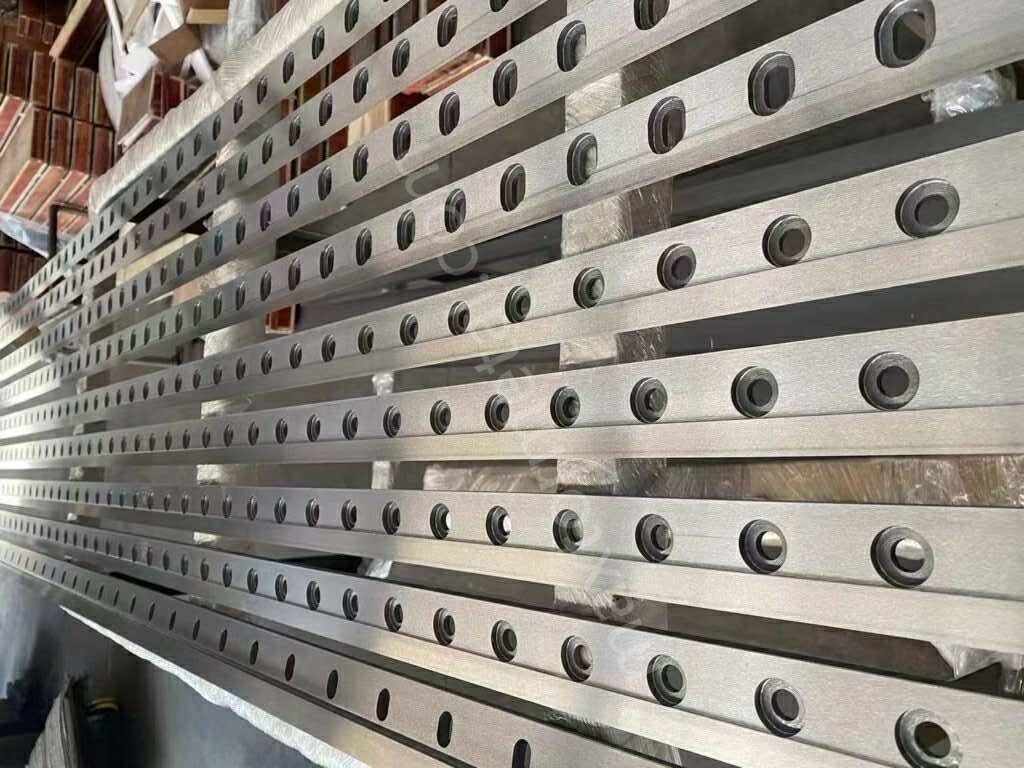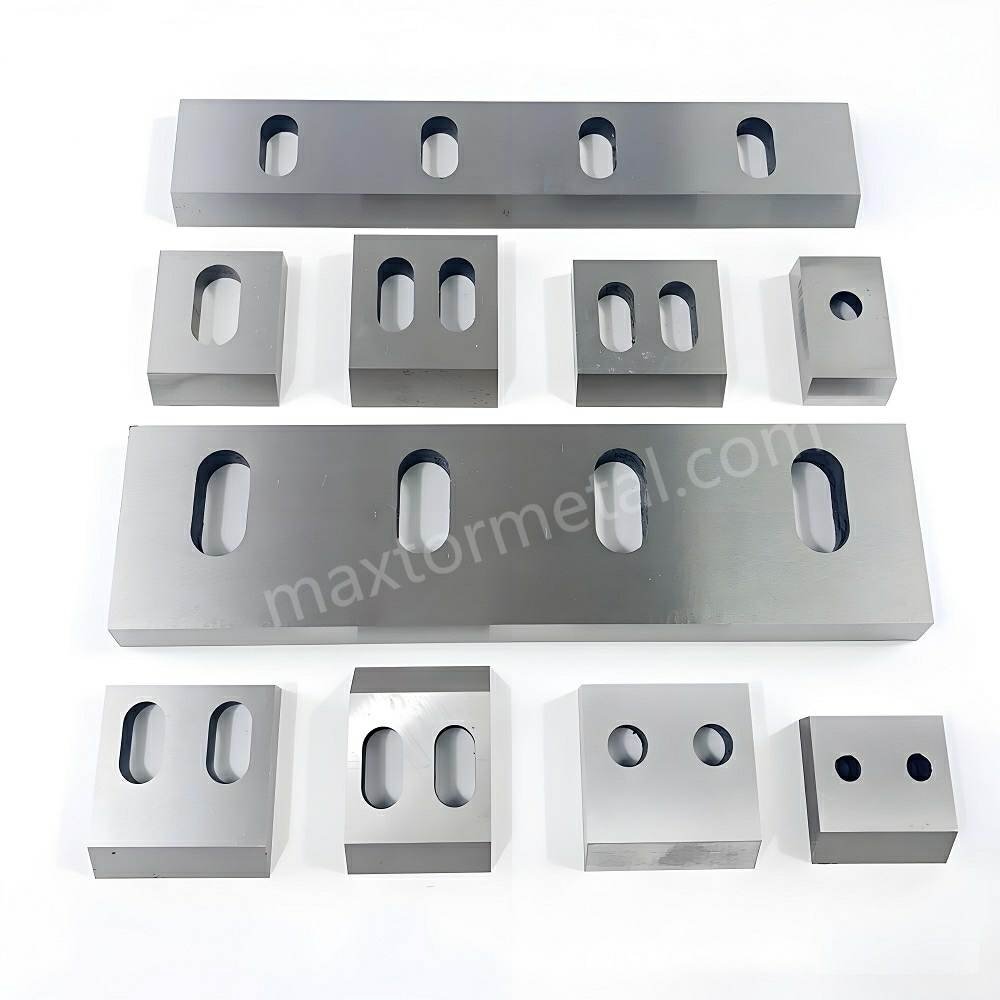
Khi lựa chọn giải pháp cắt phù hợp cho các ứng dụng công nghiệp, các doanh nghiệp phải đối mặt với vô số quyết định. Một trong những yếu tố quan trọng nhất cần cân nhắc là độ cứng và độ bền của lưỡi dao công nghiệp. Hai đặc tính này quyết định hiệu suất, độ bền và khả năng chịu ứng suất của lưỡi dao trong nhiều môi trường cắt khác nhau. Trong bài viết này, chúng ta sẽ khám phá mối quan hệ giữa độ cứng và độ bền, tầm quan trọng của chúng và cách chúng ảnh hưởng đến các giải pháp cắt. Chúng ta cũng sẽ đi sâu vào các yếu tố ảnh hưởng đến các đặc tính này, các phương pháp thử nghiệm được sử dụng để đánh giá chúng và cung cấp các ví dụ thực tế để giúp hướng dẫn bạn ra quyết định.
1. Cái gì là Độ cứng của lưỡi dao?
độ cứng là khả năng chống lõm, trầy xước và mài mòn của vật liệu. Trong các lưỡi dao công nghiệp, độ cứng đóng vai trò quan trọng trong việc xác định lưỡi dao giữ được độ sắc bén và chống mài mòn trong quá trình sử dụng lâu dài như thế nào. Lưỡi dao cứng hơn có xu hướng duy trì độ sắc bén lâu hơn, tạo ra các đường cắt chính xác và tối đa hóa hiệu suất trong các ứng dụng đòi hỏi khắt khe. Tuy nhiên, thường có sự đánh đổi: lưỡi dao cực kỳ cứng có thể giòn hơn, khiến lưỡi dao dễ bị nứt hơn khi chịu ứng suất.
Ưu điểm và nhược điểm của độ cứng cao
Độ cứng cao đi kèm với những ưu điểm và nhược điểm riêng biệt:
Thuận lợi:
- Hao mòn điện trở: Vật liệu cứng hơn có khả năng chống mài mòn tốt hơn, nghĩa là lưỡi dao sẽ giữ được độ sắc bén trong thời gian dài hơn.
- Cắt chính xác: Lưỡi dao cứng hơn có các cạnh sắc, mịn, rất lý tưởng cho các ứng dụng đòi hỏi độ chính xác cao.
Nhược điểm:
- Độ giòn: Mặc dù lưỡi dao cứng có khả năng chống mài mòn nhưng nó có thể dễ bị nứt hơn khi chịu áp lực, đặc biệt là khi chịu lực tác động đột ngột.
- Đục: Lưỡi dao cứng có thể dễ bị sứt mẻ hơn, đặc biệt là khi cắt qua những vật liệu cứng hoặc không bằng phẳng.
Các phương pháp kiểm tra độ cứng phổ biến
Để đánh giá chính xác độ cứng của lưỡi dao công nghiệp, một số phương pháp thử nghiệm được sử dụng, bao gồm:
- Kiểm tra độ cứng Rockwell: Đây là thử nghiệm phổ biến nhất được sử dụng để đo độ cứng của vật liệu. Nó bao gồm việc áp dụng một hình nón kim cương hoặc bi thép vào bề mặt vật liệu và đo độ sâu của vết lõm. Nó được sử dụng rộng rãi cho các lưỡi dao làm từ các vật liệu như thép tốc độ cao.
- Kiểm tra độ cứng Vickers: Thích hợp để thử nghiệm các vật liệu cứng hơn hoặc để đo độ cứng vi mô, thử nghiệm này sử dụng đầu kim tự tháp kim cương và thường được sử dụng cho lưỡi dao cacbua.
- Kiểm tra độ cứng Brinell: Thử nghiệm này thường được sử dụng trên các vật liệu có bề mặt thô hoặc không bằng phẳng. Một viên bi thép hoặc cacbua được ấn vào bề mặt và đo đường kính của vết lõm.
- Kiểm tra độ cứng Knoop: Kiểm tra Knoop phù hợp nhất với các vật liệu rất mỏng hoặc tinh tế. Nó sử dụng một kim tự tháp kim cương dài để đo độ cứng vi mô ở các khu vực rất nhỏ.
Ví dụ về vật liệu lưỡi dao và các bài kiểm tra độ cứng được khuyến nghị:
| Vật liệu | Bài kiểm tra được đề xuất | Phạm vi độ cứng |
| Thép tốc độ cao | Rockwell | 60-65HRC |
| cacbua | Vickers hoặc Knoop | 75-85 HRA |
| Thép công cụ | Rockwell hoặc Brinell | 50-62HRC |
Bạn muốn tìm hiểu thêm về cách độ cứng có thể ảnh hưởng đến giải pháp cắt của bạn? Hãy tiếp tục đọc bên dưới.

2. Cái gì là Độ bền của lưỡi dao?
Trong khi độ cứng là yếu tố cần thiết cho khả năng chống mài mòn và độ chính xác, độ bền cũng quan trọng không kém để đảm bảo lưỡi dao có thể chịu được ứng suất và va đập mà không bị gãy. Độ bền đề cập đến khả năng hấp thụ năng lượng và chịu được các tình huống ứng suất cao của vật liệu. Trong lưỡi dao công nghiệp, độ bền ngăn ngừa gãy khi va chạm đột ngột hoặc khi cắt các vật liệu cứng, dày đặc.
Các dạng độ bền trong lưỡi dao công nghiệp
Sự dẻo dai thể hiện chủ yếu theo hai cách:
- Khả năng chống va đập: Đây là khả năng của lưỡi dao chịu được tác động lực mạnh mà không bị nứt hoặc gãy. Lưỡi dao dùng trong xây dựng hoặc máy móc hạng nặng cần chịu được va đập từ vật liệu cứng mà không bị hư hỏng.
- Sự hấp thụ năng lượng: Khả năng hấp thụ và phân tán năng lượng của lưỡi dao khi cắt hoặc đập vào các vật liệu dày đặc. Điều này rất cần thiết đối với các lưỡi dao tiếp xúc với lực đột ngột, năng lượng cao.
Tầm quan trọng của độ bền trong các ngành công nghiệp
Độ bền đặc biệt quan trọng trong các ngành công nghiệp nơi lưỡi dao phải chịu lực mạnh, bao gồm:
- Xây dựng: Lưỡi dao trong lĩnh vực này thường phải chịu lực tác động mạnh, chẳng hạn như cắt qua bê tông, kim loại hoặc vật liệu đặc.
- Lâm nghiệp: Lưỡi dao phải chịu được lực tác động mạnh khi cắt qua gỗ, loại gỗ có thể dày và nhiều xơ.
- Máy móc hạng nặng: Lưỡi dao được sử dụng trong máy móc công nghiệp phải liên tục chịu tác động của điều kiện ứng suất cao, đòi hỏi phải có độ bền và khả năng chống mài mòn.
Các phương pháp kiểm tra độ bền phổ biến
Hai phương pháp thử nghiệm chính được sử dụng để đánh giá độ bền:
- Kiểm tra độ bền kéo: Bài kiểm tra này đo mức độ vật liệu có thể kéo dài trước khi bị đứt, đặc biệt hữu ích để đánh giá độ dẻo của vật liệu. Kiểm tra độ bền kéo thường được sử dụng để đánh giá lưỡi dao làm từ vật liệu như thép không gỉ hoặc thép lò xo.
- Kiểm tra va đập (Charpy/Izod): Các thử nghiệm này đo năng lượng mà vật liệu có thể hấp thụ trong một tác động tốc độ cao. Điều này rất cần thiết để đánh giá độ bền của lưỡi dao khi chịu tác động hoặc va chạm đột ngột.
Ví dụ về vật liệu lưỡi dao và các bài kiểm tra độ bền được khuyến nghị:
| Vật liệu | Bài kiểm tra được đề xuất | Đặc điểm độ bền |
| Thép lò xo | Kiểm tra va đập (Charpy) | Khả năng chống va đập tuyệt vời, lý tưởng cho các công việc cắt khó |
| Thép không gỉ | Kiểm tra độ bền kéo | Độ bền tốt, cân bằng tốt cho cả sức mạnh và tính linh hoạt |
| Thép công cụ tôi luyện | Cả lực kéo và lực va đập | Kết hợp độ bền với khả năng chống mài mòn tuyệt vời |
Thép lò xo, được biết đến với độ bền cao, rất phù hợp để thử nghiệm va đập. Mặt khác, thép không gỉ, với sự cân bằng giữa độ bền và khả năng chống ăn mòn, được thử nghiệm tốt nhất về độ bền kéo.
Bạn có tò mò về cách độ bền ảnh hưởng đến giải pháp cắt của bạn không? Hãy cùng khám phá thêm.

3. Sự cân bằng giữa độ cứng và độ dẻo dai
Đạt được sự cân bằng phù hợp giữa độ cứng và độ dẻo dai là rất quan trọng để đạt được hiệu suất tối ưu của lưỡi dao. Trong khi độ cứng tăng cường khả năng chống mài mòn và độ sắc bén, thì độ cứng quá cao có thể khiến lưỡi dao giòn, dẫn đến gãy khi chịu lực. Mặt khác, trong khi lưỡi dao cứng có thể hấp thụ lực tác động tốt, thì nó có thể không giữ được độ sắc bén lâu như lưỡi dao cứng hơn.
Ví dụ thực tế về hiệu suất của lưỡi dao cân bằng
Các ứng dụng cắt khác nhau đòi hỏi sự cân bằng cẩn thận của cả hai đặc tính:
- Lưỡi cắt chính xác cho máy cắt Metal: Những thứ này cần phải đủ cứng để chống mài mòn và đủ bền để chịu được va đập. Ví dụ, thép tốc độ cao Lưỡi dao thường được chọn để cắt kim loại vì có độ cứng tuyệt vời và độ dẻo dai vừa phải.
- Lưỡi cưa gỗ: Lưỡi dao trong chế biến gỗ cần phải đặc biệt cứng để chịu được tác động khi cắt qua gỗ dày hoặc gỗ xơ. Những lưỡi dao này thường có mức độ cứng cao hơn nhưng có thể không cứng bằng lưỡi dao dùng để cắt kim loại.
Bạn cần trợ giúp để lựa chọn sự kết hợp phù hợp giữa độ cứng và độ dẻo dai cho giải pháp cắt của mình? Hãy liên hệ với các chuyên gia của chúng tôi ngay hôm nay để được tư vấn phù hợp.
4. Các yếu tố ảnh hưởng đến độ cứng và độ bền của lưỡi dao
Một số yếu tố ảnh hưởng đến hiệu suất của lưỡi dao về độ cứng và độ bền. Bao gồm thành phần vật liệu, quy trình xử lý nhiệt và thiết kế lưỡi dao.
4.1 Thành phần vật liệu
Vật liệu được sử dụng trong sản xuất lưỡi dao quyết định cả độ cứng và độ dẻo dai. Ví dụ, lưỡi dao làm từ thép cacbon cao có xu hướng cứng hơn nhưng kém dẻo dai hơn. Mặt khác, vật liệu như thép không gỉ mang lại sự cân bằng tốt giữa các đặc tính này.
4.2 Quy trình xử lý nhiệt
Xử lý nhiệt như dập tắt (làm mát nhanh), sự tôi luyện (sưởi ấm có kiểm soát), và ủ (làm mát dần dần) giúp điều chỉnh cả độ cứng và độ dẻo dai. Mỗi quy trình có thể nâng cao hiệu suất của lưỡi dao theo những cách khác nhau.
4.3 Thiết kế và hình dạng lưỡi dao
Độ dày, hình dạng cạnh và thiết kế tổng thể của lưỡi dao cũng ảnh hưởng đến hiệu suất của nó. Lưỡi dao có cấu hình dày hơn có xu hướng cứng hơn nhưng có thể không giữ được độ sắc bén. Ngược lại, lưỡi dao mỏng hơn có thể đạt được độ cứng cao hơn nhưng dễ gãy hơn.

5. Lựa chọn Lưỡi dao phù hợp với nhu cầu của bạn
Việc lựa chọn lưỡi dao phù hợp cho ứng dụng của bạn phụ thuộc vào việc hiểu các yêu cầu cụ thể của ngành công nghiệp của bạn. Cho dù bạn cần khả năng chống mài mòn cao hay độ bền vượt trội, điều cần thiết là phải đánh giá cả hai đặc tính trước khi đưa ra quyết định.
5.1 Đánh giá các yêu cầu của ngành của bạn
Các ngành công nghiệp khác nhau có nhu cầu cắt riêng biệt và hiểu được những yêu cầu đó sẽ giúp bạn lựa chọn lưỡi dao phù hợp. Ví dụ, lưỡi dao dùng trong chế biến thực phẩm cần cân bằng giữa độ sắc bén và khả năng chống ăn mòn, trong khi lưỡi dao dùng trong xây dựng tập trung nhiều hơn vào độ bền.
5.2 Tiêu chuẩn thử nghiệm và chứng nhận
Chứng nhận đảm bảo rằng lưỡi dao của bạn đáp ứng các tiêu chuẩn công nghiệp về cả độ cứng và độ bền. Luôn làm việc với các nhà cung cấp cung cấp lưỡi dao đáp ứng các chứng nhận này để có hiệu suất đáng tin cậy.
5.3 Làm việc với các nhà cung cấp đáng tin cậy
Nhà cung cấp đáng tin cậy có thể cung cấp lời khuyên chuyên môn và giải pháp cắt phù hợp với nhu cầu của bạn. Bằng cách làm việc với đối tác phù hợp, bạn có thể đảm bảo lưỡi dao của mình mang lại hiệu suất nhất quán.

6. Giải pháp cho các vấn đề thường gặp về hiệu suất của lưỡi dao
Lưỡi dao có thể bị mòn, sứt mẻ hoặc gãy theo thời gian. Sau đây là cách bạn có thể giải quyết những vấn đề này:
- Mòn sớm: Sử dụng vật liệu cứng hơn và duy trì độ sắc bén bằng cách mài thường xuyên.
- Vỡ hoặc sứt mẻ: Chọn vật liệu bền hơn hoặc điều chỉnh thiết kế lưỡi dao để tăng khả năng chống va đập.
7. Đưa ra quyết định sáng suốt để có hiệu suất lưỡi dao tối ưu
Khi lựa chọn lưỡi dao công nghiệp cho các giải pháp cắt của bạn, hãy hiểu mối quan hệ giữa độ cứng Và độ bền là rất quan trọng. Bằng cách xem xét các nhu cầu cụ thể của ứng dụng của bạn—cho dù đó là cắt chính xác, khả năng chống va đập cao hay khả năng chống mài mòn—bạn có thể chọn vật liệu và thiết kế lưỡi lý tưởng để tối ưu hóa hiệu suất.
Trong khi độ cứng đảm bảo lưỡi dao sắc bén, chống mài mòn và duy trì độ chính xác, độ bền đảm bảo lưỡi dao có thể chịu được va đập và tiếp tục cắt mà không bị gãy. Sự cân bằng phù hợp giữa hai đặc tính này sẽ cho phép lưỡi dao của bạn hoạt động tối ưu, giảm thời gian chết và đảm bảo kết quả lâu dài hơn.
Muốn lkiếm được nhiều hơn hoặc tìm giải pháp cắt hoàn hảo cho ứng dụng của bạn? Liên hệ chúng tôi ngay hôm nay để được hướng dẫn chuyên môn và lưỡi dao chất lượng cao.


